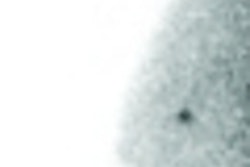PHILADELPHIA - Toshiba America Medical Systems introduced new versions of its e.soft nuclear medicine software platform at this week's annual meeting of the Society of Nuclear Medicine.
The new versions, available for the Tustin, CA-based vendor's t.cam Signature Series dual-detector gamma camera system, include e.soft version 3.5 and e.soft express version 2.0. Toshiba said it has incorporated workflow environment enhancements with e.soft 3.5, including quality control activity to motion correct data acquired via profile attenuation correction.
The new release adds what Toshiba calls Broker Activity, which is designed to ease the integration of third-party applications into the e.soft workflow environment. Users can now also capture print areas in JPEG, BMP, and EMF formats, as well as any cine study in an AVI format, according to the vendor.
Other additions include an interactive region of interest and split function capability, enhanced dual-monitor support, interactive print and save functions, and three-slice and multimodality slice display capabilities. As an option, customers can select Segami's NeuroGam software for 3D comparisons of SPECT and PET brain scans.
An optional software package, e.soft express version 2.0, provides more flexibility and remote review of e.soft data, Toshiba said. The software's cardiac capability has been optimized for remote viewing of cardiac quantification analysis data, and Toshiba said it has also incorporated viewing for general nuclear medicine procedures and PET/CT data with complete workflow functionality, print and save screens, and DICOM support for third-party data viewing.
In other software developments, Toshiba showed new applications for advanced nuclear medicine studies on t.cam. With sentinel node display, sentinel node positions seen on a gamma camera by the body outline created from scatter data are more easily found and identified, Toshiba said.
Toshiba's automatic registration tool employs a segmentation method for auto registration of brain images, while the company's segmentation with scatter and photopeak window data for attenuation correction (SSPAC) tool provides attenuation correction of myocardial SPECT without a transmission CT or a hybrid system, according to the vendor.
By AuntMinnie.com staff writersJune 22, 2004
Related Reading
Toshiba gets FDA nod for new flat-panel detector, May 26, 2004
Toshiba forges clinical research pact with Texas institute, May 20, 2004
Toshiba, Vital Images, Johns Hopkins to work on CTA apps, May 13, 2004
Toshiba's SureCardio beats half-scan reconstruction in 16-slice CT, May 12, 2004
Toshiba adds Infinix Vs-i to stroke center, April 8, 2004
Copyright © 2004 AuntMinnie.com




















